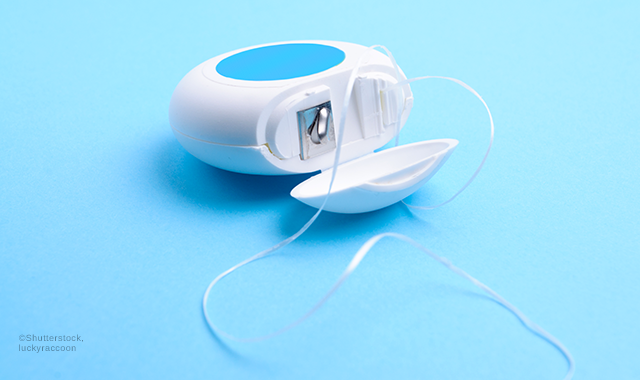New study suggests sequence of mechanical cleansing may influence oral health

Dentists have routinely emphasized the importance of mechanical cleansing, citing it as one of the most effective measures to deter plaque buildup and the potential onset of caries and periodontal disease. When advising patients, one of the most common questions that dentists receive regards the process of mechanical cleansing: can patients do without either, and is there a combination of flossing and brushing that works better than others?
The answer to the first question is relatively easy: no. The answer to the second question is actually still being debated.
According to the fourth edition of Medical Microbiology, the dental profession grew out of the proliferation of dental decay in the beginning of the 20th century. The condition was so widespread that it was the leading cause of military service rejection in World Wars I and II and the Korean War. To combat the issue, dentists began proactively emphasizing the important of routine mechanical cleansing and even helped establish one of the major breakthroughs in national oral health – community water fluoridation.
Related article: Study confirms water fluoridation prevents tooth decay in children and teens
Until the spring of this year, few clinical studieshad been published examining mechanical cleansing’s effectiveness at removal of plaque. Any studies that were published regarding plaque removal usually focused on the comparison of the effectiveness between different types of brushes, brushing techniques and even toothpaste use. Additionally, though most studies would acknowledge the increased benefit flossing provides, few quantified the combined effect of brushing and flossing.
Then, in the spring of 2018, dental students at the Dental Materials Research Center at Mashhad University of Medical Sciences in Mashhad, Iran, participated in a two-part, randomized-controlled crossover study to quantify the combined effectiveness of brushing and flossing and hopefully determine the best process for mechanical cleansing.
After suspending their individual oral cleansing produces for 48 hours, the students were split into two groups. One group brushed their teeth with a fluoride-rich toothpaste prior to flossing, while the other group flossed their teeth prior to brushing with a fluoride-rich toothpaste. After cleansing plaque levels were recorded using the Rustogi Modified Navy Plaque Index, and remaining fluoride levels were measured using a fluoride ion-specific electrode. After a two-week break, constituting a wash-out period to allow for a reestablishment of the students’ oral microbiota, the process was repeated with the groups conducting the opposite cleansing procedure.
According to Dr. Richard T. Kao, periodontist and president-elect of the Academy of Periodontology, the study was approached in a very classical manner, with very little threat of long-term negative effects.

One of the primary concerns in conducting a study such as this is the potential to introduce unnecessary infection into human participants. Further complication with this particular study was the fact that dental students paying for an education were the test subjects.
According to the study’s official press release, the students were given a prophylaxis treatment prior to the start of the study. Dr. Kao said that the students also underwent an intensive examination with careful instructions provided regarding protection and cleansing.
“This was actually a very good study, simple-minded, that answers a lot of basic questions…” Dr. Kao says.
Furthermore, according to Dr. Kao, most ethical complications were nullified because, at all stages of the study, the students were brushing - and thus eliminating - the buildup of bacteria that could potentially cause infection.
Trending article: The dangers of microbial resistance in the dental practice
After examining the collected data, the researchers concluded that whole and interdental plaque buildup were greatly reduced in the mouths of students who flossed their teeth before brushing. Regarding fluoride retention, when students flossed prior to brushing, more fluoride residue was found within the interdental spaces than when students flossed prior to brushing.
Though the students were using a fluoride-rich toothpaste, which Dr. Kao says is pretty standard for consumer products, fluoride retention was most likely higher when flossing preceded brushing because the interdental spaces were cleared before being exposed to both the toothpaste containing fluoride as well as fluoridated tap water.
Stephen R. Daniel, DDS, current president of the American Academy of Periodontology, said in a press release that “while this study finds that flossing before brushing may result in the reduction of plaque, it’s important for everyone to remember to do both every day to maintain the health of their smiles.”
Click here to read the full study in Wiley's Journal of Periodontology